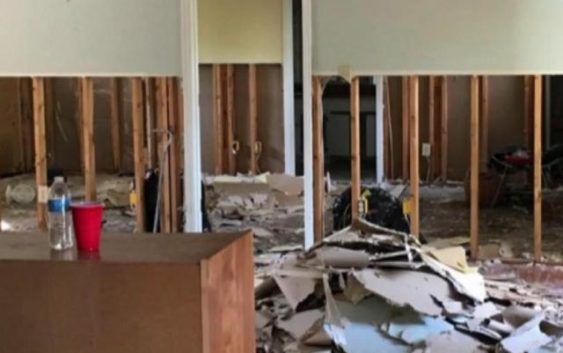- Duke Energy prepares for potential power outages as severe weather nears the Triangle
- South Carolina wildfire grows to more than 2,000 acres, firefighters concerned about strong winds Tuesday
- Roof ripped off, damaged apartments, flipped over RVs: The DFW storm damage we saw
- Firefighters concerned about winds picking up Tuesday as South Carolina wildfire grows to more than 2,000 acres
- Central Texas prepares for wildfire threat with expanded response
With arrival of hurricane season, new flood insurance options offer greater coverage

Homes surrounded by water – a sight that seems to be more common in North Carolina.
“Anybody that’s been through that kind of thing, you don’t forget,” said Barbara Pilcher, who had several feet of water inside her home in New Bern after Hurricane Florence.
The flooding destroyed walls, floors, furniture, appliances and mementos.
Everything, she said, was wet and stinky – already starting to cook in the humidity and the mold.
“I’m thinking maybe a quarter of what we owned was salvageable,” she said.
Everything else was dragged to the curb.
Pilcher is grateful she had flood insurance.
“If you didn’t have insurance, you’d be in trouble,” she said. “Even a little bit of water, for only a brief period, will do surprising amount of damage.”
New flood insurance options offer greater coverage
A typical homeowner’s or renters policy does not cover flooding – you need a separate flood policy.
“North Carolina is the seventh ranking state in flood events – yet they’re less than 10% of the population that have flood insurance,” said Joanna Biliouris, chief operating officer NC Rate Bureau.
The organization, which represents insurance companies, is working to spread the word about another coverage option now available in our state.
It’s an alternative to the national program managed by FEMA, which caps limits at $350,000 for your home and belongings.
Many insurance companies now offer flood coverage with higher coverage limits.
Plans start at $175 dollars a year based on coverage amounts and risk.
“So if you’re on the coast, certainly you’re probably gonna pay more than, you know, if you’re inland here in Raleigh,” said Biliouris.
You can easily check your risk and estimate cost through the North Carolina Flood Risk Information System online mapping tool.
Enter your address and it shows the risk level for your location.
A calculator uses your home’s square footage, elevation and building value to estimate for how much you’ll pay for flood insurance.
Note though, a third of all claims filed with the National Flood Insurance Program were in areas deemed low and moderate-risk.
Considering that and the heavy rain and hurricanes we’ve seen, whether through a private company or the NFIP, insurance is worth considering.
Take it from someone who’s been there.
“Oh, get insurance,” said Pilcher. “If nothing else, for your peace of mind, it’s worth it.”
And remember: A policy needs to be in place for 30 days before it takes effect.